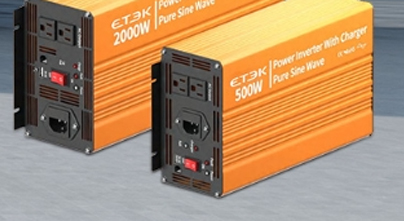A solar inverter is a critical component of a solar power system, converting the direct current (DC) electricity generated by solar panels into alternating current (AC) electricity, which is used by most household appliances and the electrical grid. Here's how it works:

Solar panels are composed of multiple photovoltaic cells, which generate direct current when exposed to sunlight. This direct current is first collected and transmitted to the solar inverter. The voltage and current generated by the solar panel depend on factors such as the intensity of light, the area of the panel, and the efficiency of the panel.
The DC power entering the inverter is not converted directly, but first goes through the power regulation link. The solar inverter monitors and adjusts the input DC power to ensure that it can stably provide appropriate power for the subsequent conversion link. Through the intelligent power regulation system, the inverter can flexibly adjust the input power according to the real-time output power of the solar panel and the load requirements.
This is the core work of solar inverters. Through specific circuits and power electronic devices, direct current is converted into alternating current. Generally, an inverter circuit is used, which uses the conduction and shutdown of semiconductor switching devices to switch direct current into alternating current waveform according to a certain rule.
The converted AC power also needs to be frequency and voltage controlled. In different usage scenarios, there are specific standard requirements for the frequency and voltage of AC power. The solar inverter will accurately control the frequency and voltage of the output AC power through the internal control circuit and adjustment device to meet the corresponding standards and usage requirements.
The solar inverter has various monitoring and protection functions built in. It can monitor the input and output voltage, current, power and other parameters in real time, and feed this data back to the user or control system. Once an abnormal situation is detected, such as overvoltage, overcurrent, overheating, etc., the inverter will immediately take protective measures and automatically cut off the circuit to prevent equipment damage and ensure the safe and stable operation of the entire solar power generation system.
Solar inverters convert DC power into usable AC power through DC power generation, power regulation, current conversion, frequency and voltage control, and provide key guarantees for the normal operation of solar power generation systems and the effective use of electrical energy. With the continuous advancement of technology, the performance and efficiency of solar inverters are also constantly improving, and in the future it will play a more important role in the field of renewable energy.
GET A QUOTE